Science enthusiast Richard Romney shares a few boredom busting experiments for when it’s too cold to send the kids outside.
Find more ideas from Richard at becoolgrandpa.com.
Popsicle Stick Mayhem
The Science Lesson: Kinetic Energy
With one simple household supply, the kids will be busy for hours! Inspire them to create and build using popsicle sticks. Richard says it’s sort of like a puzzle. Once they’re done building, try this project:
Materials
- Sharpie Marker
- 100 Popsicle sticks
- A table or open room
- Be Cool Grandma’s Poem to help learn the stick weaving method (popsicle stick weave wave – Be Cool Grandpa)
Instructions
- Weave the popsicle sticks together using the Cobra Weave. This method allows the popsicle sticks to move. Richard says it won’t take much time to learn, but that you need to practice and learn the weaving method. Use his poem to help you remember. You could write it on the sticks, as seen in the images below.
Bottom, Top, Criss Cross.
Over, Under, connect the dots.
Every stick is parallel, hold it snug till it fits well.
Keep the pattern going tight. Till it’s time to take its flight.
The energy trapped wants to move. Every stick will dance and groove!
– Be Cool Grandma
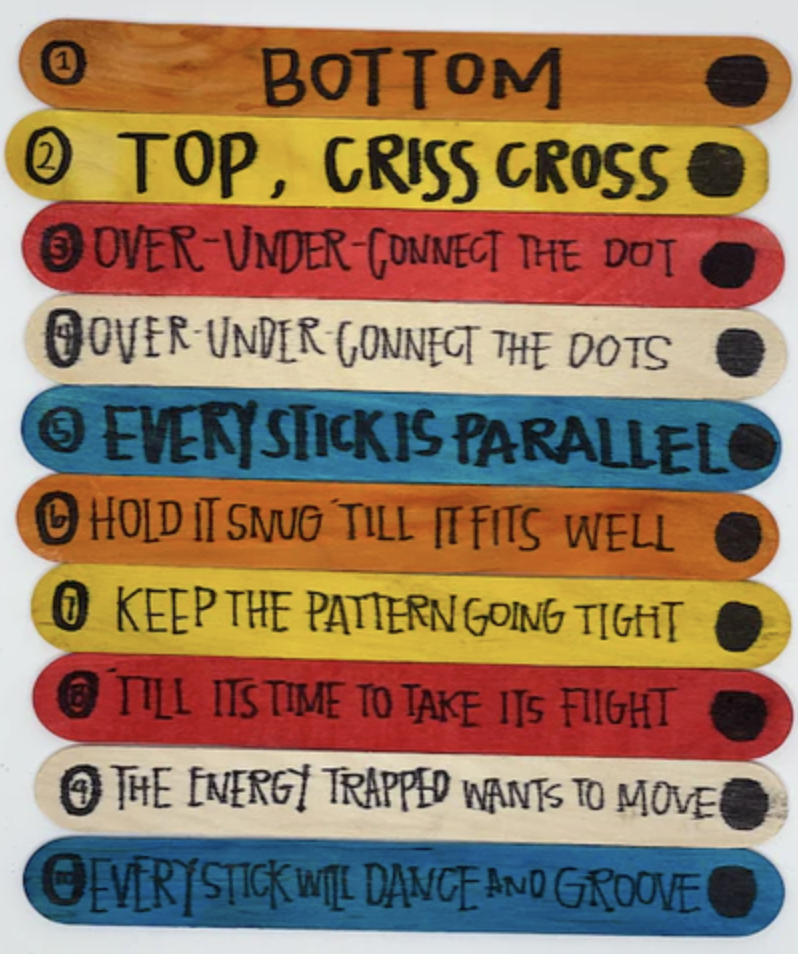
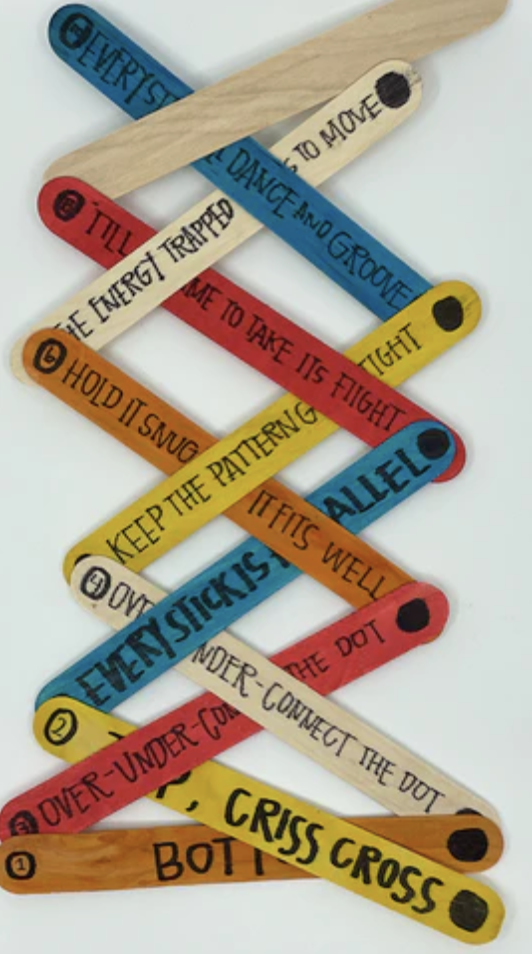
2. Number each stick 1-10 with a Sharpie marker.
3. Start the weave on your carpet floor, or long table. Take stick 1 and 2 crisscrossed. Then, take stick 3 over stick 2, then under stick 1. You’ll have to use your fingers to keep the tension controlled. Stick 4, over stick 3, and then under stick 1. Stick 5, over stick 4, then under stick 2. Once you harness the pattern, keep building the weave. You can keep going for as long as you’d like! (Watch the video for a better view of Richard’s weaving method!)
4. To lock the weave in place, put a popsicle stick under the second to last left stick and under the last right stick.
5. Get your slow-motion camera ready! Then, countdown… and remove the last popsicle stick you used to lock in place.
6. Watch the kinetic energy release, and the wave of the weave fly!
Kinetic energy is the energy something has because it’s moving. Imagine a rolling ball. When you push it, it starts moving. The faster it goes and the heavier it is, the more kinetic energy it has. Kinetic energy is all about how fast something is moving, and how much power it has because of that speed!
Nailed It!
The Science Lesson: The Center of Mass
This activity teaches the kids about the Center of Mass. Richard defines it as: “The point at which the distribution of mass is equal in all directions and does not depend on a gravitational field.”
Materials
- 11 nails, all the same size. Richard prefers 6” nails
- Small block of wood. Richard uses a 5” x 5”
- Hammer
Instructions
- Hammer one of the nails into the center of the block of wood.
- Place one nail down on it’s side. Lay the other nails on top of it, alternating sides. Place it just below the tip of the nail.
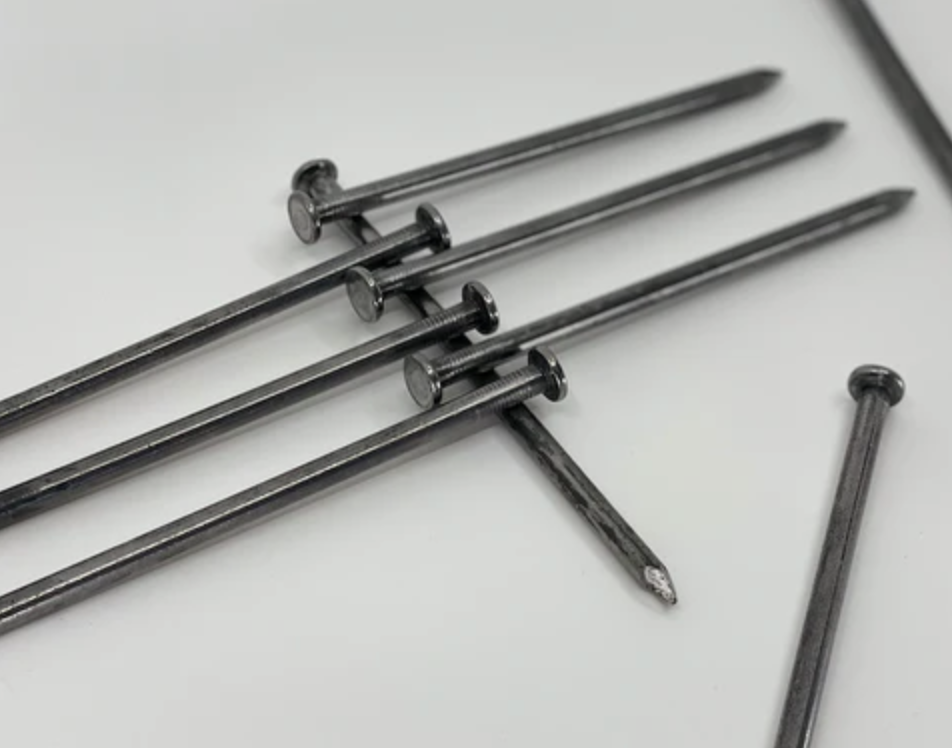
3. Place the last nail in the opposite direction to lock it together.
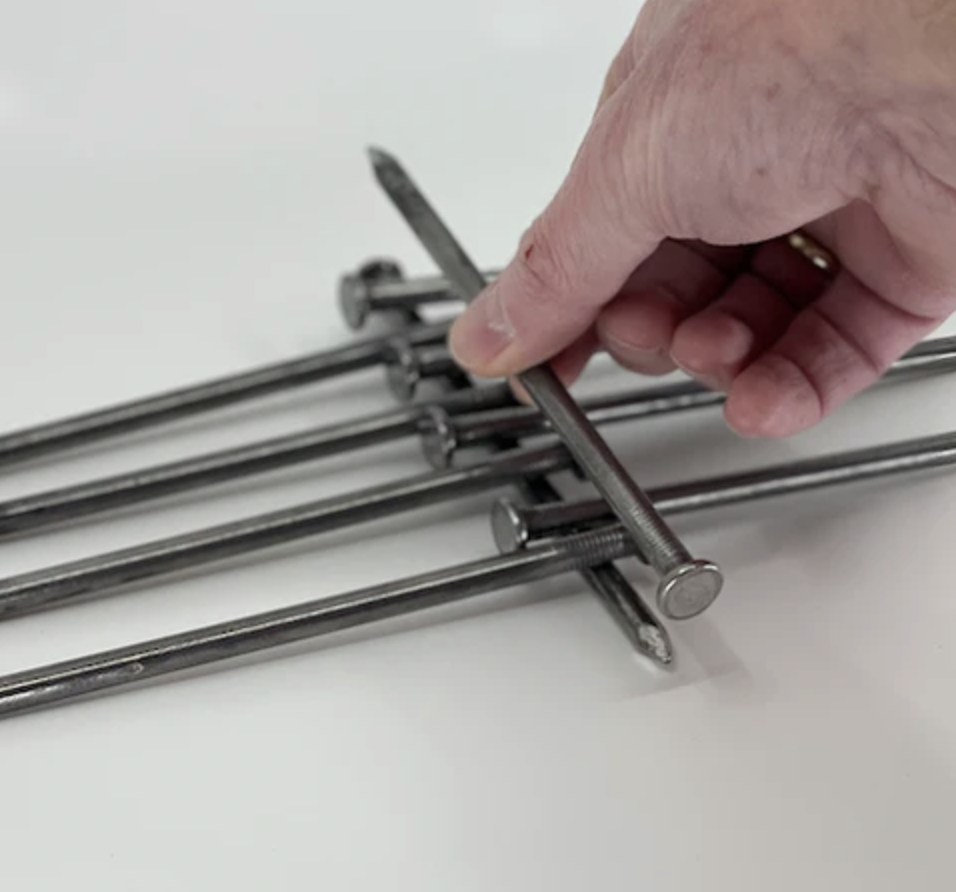
4. Holding each end of the nails, lift them all onto the one standing nail in the block of wood. Find the balancing point.
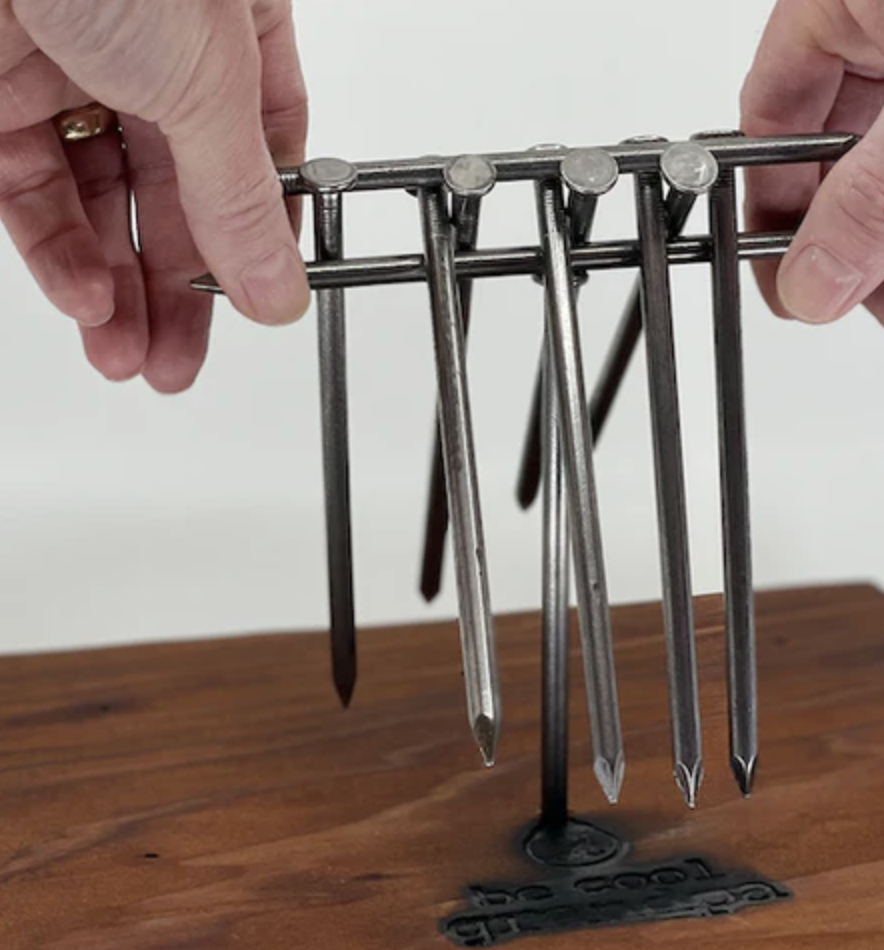
5. Let go of the nails, and watch them balance on top of the base nail!
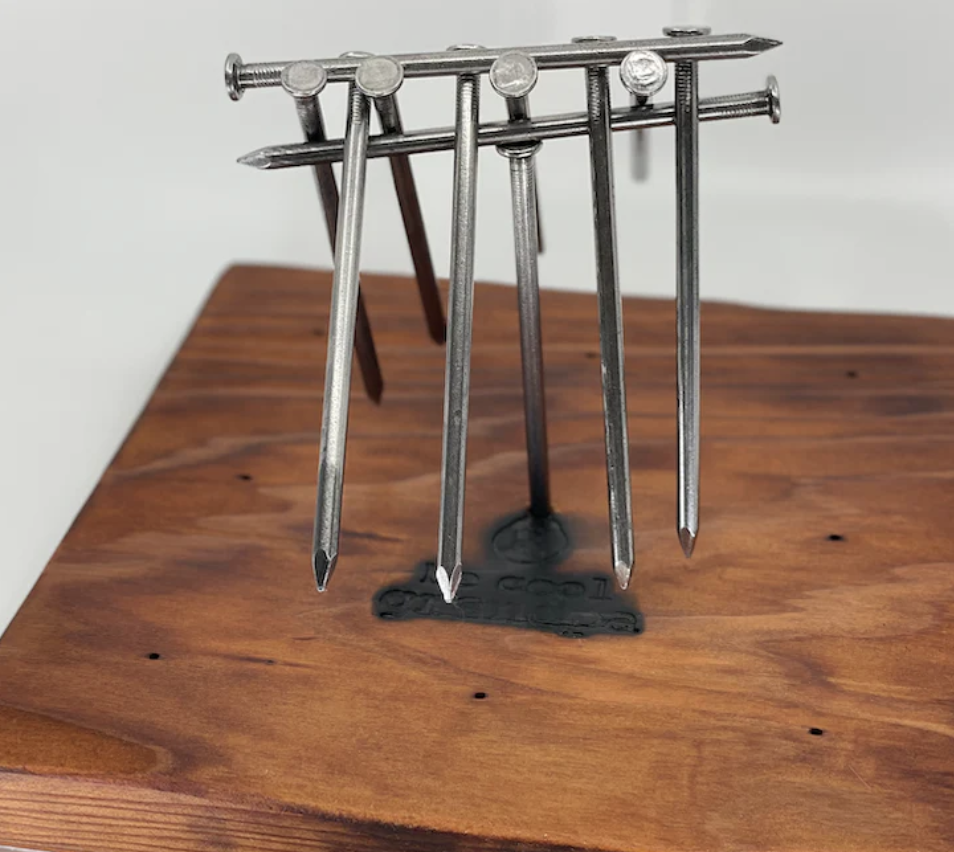
Think of a seesaw or teeter-totter at the playground. If two kids the same size sit at the same distance from the middle the see-saw stays balanced. The center of mass is like the balance point for any object. It’s the spot where, if you put your ginger, the object would balance perfectly without tipping over. So, it’s like finding the middle point where everything is in perfect balance!
Liquid or Solid?
The Corn Starch Mystery
All you need to pull this project off is a little bit of cornstarch and water! It will keep the kids busy for hours. It’s the easy, messy, and simple!
Materials
- Cornstarch (at least a 16 ounce box. This usually spreads the fun to 2-3 kids)
- Water
- A bowl or sheet pan
Instructions
- Pour the cornstarch into a bowl or sheet pan.
- Add the water. There is no exact measurement, but add about 1 cup of water to 1 cup of cornstarch. Feel it out, and add the water slowly.
- Mix with your hands!
- Play around with your goo.
When you stand on the goo, you sink through. However, when you run in place and keep moving, it’s a solid. Talk about the science of liquids and solids. A liquid, like water or juice, can change its shape and flow around. If you pour it in a cup, it takes the shape of the cup. If you tilt the cup, the liquid moves and takes that new shape. The goo is a mystery. It’s both a liquid, and a solid.
Fizz, Pop, Boom Rockets
The Science Lesson: Carbon Dioxide Gas
You’ll want to take this project outdoors! These rockets fly using a little bit of science. It can be a little messy. Richard says, “When Alka-Seltzer is dissolved in water, it undergoes an acid-base reaction that releases carbon dioxide gas.”
Materials
- Eye protection
- Tubes with snap on lids (Film canisters or recycled ZipFizz energy drink tubes work great!)
- Alka-Seltzer tablet cut in pieces
- Small bowl with warm water
- Smooth outdoor surface for launching the rocket
Instructions
- Divide the Alka-Seltzer tablet in to four equal pieces.
- Fill the canister/tube half way up with water.
- Place ½ of the Alka-Seltzer tablet in the canister/tube.
- Snap the lid tight then turn the container/tube upside down so the lid is down.
- Stand back and wait for it to pop and fly high. (Takes from 10 to 30 seconds to pop)
“This is a chemical reaction,” Richard explains, “As the antacid tablet fizzes, carbon dioxide is released inside the canister. Pressure from the gas builds and eventually pops the lid off. The thrust, or push, or your rocket is related to how much pressure built up inside the canister before it pops.” Richard says it’s fun to experiment with different ratios, too. What happens when you add more water and less seltzer?
See if you can catch the canisters after they pop. Count how many rockets you can set up before the first one pops. See who can get their rocket to fly the highest! The possibilities for fun are endless.
Richard Romney is known online as, Be Cool Grandpa, and he stands to that name! Grandpa is his favorite role. He believes in thoughtful, purposeful, grandparenting. When he’s not cooking or experimenting with the grandkids, you can find him running, gardening, water skiing, and tinkering around.



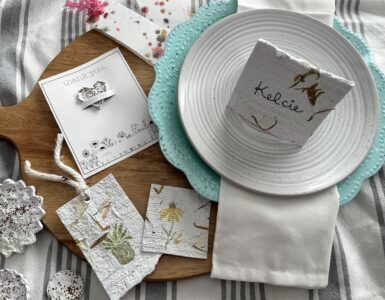
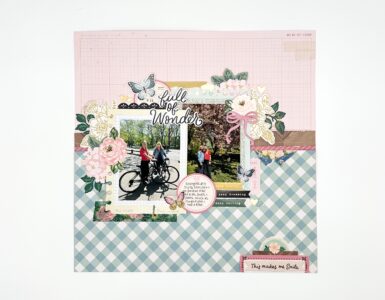










Add comment